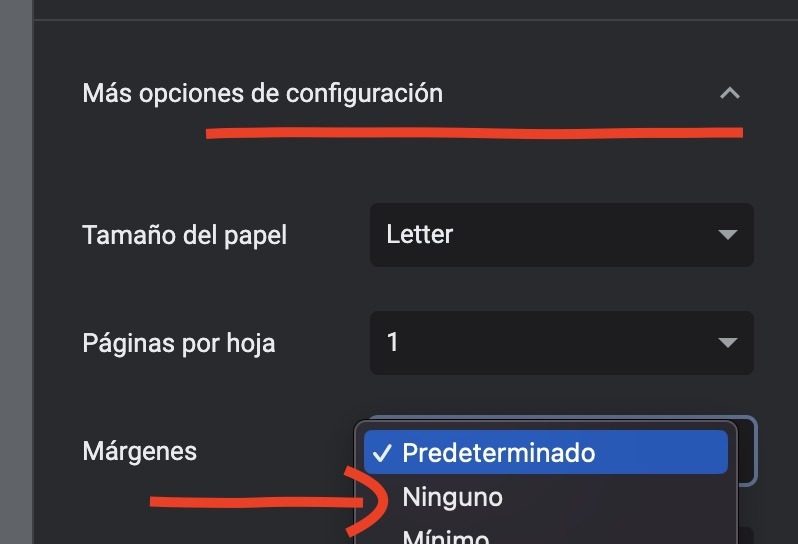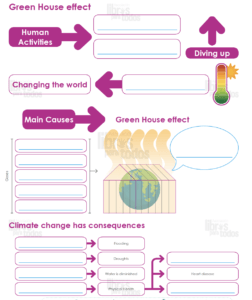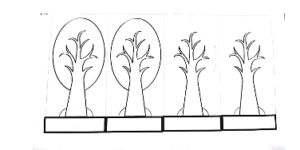English 6 Unit 1 Term 1 Week 1, 2025
English 6 Unit 1 Term 1 Week 1, 2025
Instrucciones:
• Los bloques sombreados en color gris se pueden ocultar en la impresión final.
• Para ello haga clic sobre cada uno de los bloques que desea ocultar.
• Para encenderlo nuevamente, pulse el bloque otra vez.
• Solamente los bloques encendidos serán impresos.
• Pulse el botón «Imprimir» cuando se encuentre listo.
• Para un mayor aprovechamiento del espacio, recomendamos eliminar los márgenes al imprimir.
¿Cómo guardar PDF?

Recomendamos utilizar el navegador Google Chrome.
Si no lo tiene instalado en su dispositivo puede descargarlo aquí.
El diálogo de impresión iniciará en cuanto cierre estas instrucciones.
En el cuadro de diálogo, cambie el destino de la impresión:

En las opciones, seleccione «Guardar como PDF»:

Para aprovechar todo el espacio de su hoja, recomendamos desactivar los márgenes:

Por último pulse el botón «Guardar»:

¿Cómo imprimir en color?

Recomendamos utilizar el navegador Google Chrome.
Si no lo tiene instalado en su dispositivo puede descargarlo aquí.
El diálogo de impresión iniciará en cuanto cierre estas instrucciones.
En el cuadro de diálogo de la impresión siga las siguientes instrucciones:
Si desea imprimir el planeamiento a color, asegúrese de activar la opción «Color»:

En la sección «Más configuraciones»:

Active la opción «Gráficos de fondo»:

Finalmente pulse el botón «Imprimir»:

School year: 2025
Period:
Term: I
Level: Sixth Grade
Unit:1
Week:1
Domain: Socio-interpersonal
Scenario: Costa Rican Heroes
Theme: National Heroes and Famous People
Enduring Understanding: Heroes make sacrifices to improve the lives of those they serve.
Essential Question: What actions define a hero?
General Competences:
Responsible Citizenship ( X )
Life Competences ( )
Competences for Employability ( )
Learn to Know
Grammar & Sentence Frames
Learn to Know
Grammar & Sentence Frames
Simple present tense and personal subject pronouns (SVC)
- (Juan Santamaria, Sandra Cauffman,) are national heroes/famous people.
- He/she is sacrificial. (brave, courageous)
- He/she fights crime. (flies, disappears, freezes things, destroys, jumps, etc.)
Phonemic Awarenes
Segmenting regularly spelled two-syllable words and common CVC words including the sounds represented by:
- Single letters, consonant blends, consonant digraphs, and diphthongs. (e.g. Changing lives, bravery, save, fire).
Vocabulary
- National Heroes and famous people
Heroes and famous people
- community leaders/helpers
- sportsmen/women
- scientists
- actor/actress
- religious leaders
Actions or Places of incidence
- community and national problems
- entertaining people
Heroes/ famous people’s characteristics
- Brave, intelligent, strong…
Information questions
- Who is your hero/ who do you admire the most?
- I like…/ my favorite person/hero is…
Learn to Do
Function
Describing people’s achievements and personal characteristics
Discourse Markers
Linkers: Sequential – past tense
First, then, after that, finally
Learn to Be and Live in Community
Psycho-social
- Expressing respect and pride for local and national culture, outstanding people, family and friends.
Socio-cultural
- Using different choices of greetings and leave takings according to context.
- Expressing positive politeness to express admiration, affection and gratitude.
Idioms/ phrases
- To take the bull by the horns.(To make something hard in a brave determined way.
Assessment Strategies & Evidences of learning
Learner…
R.1. Distinguishes the important information in everyday visual text.
R.PA.3. Demonstrates knowledge of phonemic awareness by reading short texts aloud.
R.1.1. Identifies text features such as titles, headings or illustrations that provide information about the topic of the text.
R.1.2. Identifies relevant ideas in an everyday visual text that describes people’s achievements and personal characteristics.
R.1.3. Distinguishes important information in an everyday visual text about people’s achievements and personal characteristics.
SI.1. Provides some information concerning special or famous people.
SI.1.1. Brainstorms with a partner vocabulary, phrases and questions to ask and respond about someone’s achievements and personal characteristics.
SI.1.2. Responds to questions about people’s achievements and personal characteristics.
Goals
Learner can…
R.PA.3. Demonstrate knowledge of phonemic awareness.
SI.1. Provide some information concerning special or famous people.
Pedagogical Mediation/ Didactic Sequence
Pre-teaching
Teacher asks if students have a personal hero? And Why?
Warm up
Students observe pictures on page 6. They try to guess who they are. They write their names next to each illustration.
Activation of Prior Knowledge
Teacher writes their names on the board and asks students to share if they know why they are famous for?
The teacher writes some of the student´s ideas next to each name.
Modeling
The teacher writes the name of Keylor Navas on the board and asks students if they know him.
The teacher writes next to it the words achievements, profession and country. Teacher asks:
- Where was Keylor Navas born?
- What is Keylor Navas profession?
- When was Keylor Navas born?
- What are some Keylor Navas’ achievements?
| Achievements
|
4X FIFA Club World Cup Winner
|
| Profession
|
Soccer player
|
| Country
|
Costa Rica |
Clarifying
The teacher answers to questions if there are any.
Pre-task
The teacher divides the class in two. Half of the class read the information on page 16 of the book. The other half reads page 22.
The teacher clarifies any new vocabulary if needed.
Task-rehearsal
The teacher makes a simple chart on the board to be completed. The teacher asks the students the questions again.
- Where was Clodomiro Picado born?
- What is Clodomiro Picado profession?
- When was Martin Luther King born?
- What are some Martin Luther King`s achievements?
The teacher sits students in pairs so each of them have to read one of the texts.
| Clodomiro Picado | Martin Luther King | |
| Birth day |
|
|
| Profession |
|
|
| Achievements |
|
|
| Country |
Task completion
Each student asks his/her partner the questions to fill in the blanks depending on the read he/she had done.
- Where was Clodomiro Picado born?
- What is Clodomiro Picado profession?
- When was Clodomiro Picado born?
- What are some Clodomiro Picado’s achievements?
- Where was Martin Luther King born?
- What was Martin Luther King profession?
- When was Martin Luther King born?
- What are some Martin Luther King`s achievements?
The students fill in the blanks to complete the chart.
Task assessment
The teacher asks some students the questions.
Some students write the answers on the board.
Students compare their answers.




